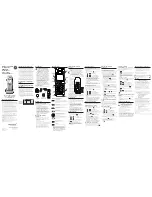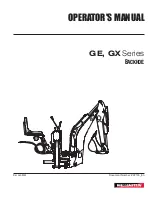
10
11
6. Maintenance
The product may be cleaned with a soft damp cloth and then
wiped dry. Do not use abrasive, solvent based or aerosol
cleaners as this may damage and/or discolour the product.
Do not allow water to enter or attempt to clean inside the unit.
7. Batteries
Do not allow the batteries to corrode or leak as this may cause
permanent damage to the product. Take care to insert the
batteries with the correct polarity as shown inside the battery
compartments. Do not mix new and old batteries or different
types of batteries. Do not use rechargeable batteries.
At the end of their useful life the batteries should be disposed
of via a suitable recycling centre. Do not dispose of with your
normal household waste. DO NOT BURN.
8. Alarm System Limitations
Even the most advanced alarm systems cannot guarantee
100 % protection against burglary or environmental problems.
All alarm systems are subject to possible compromise or failure-
to-warn for a variety of reasons.
Please note that you may encounter problems with your
system if:
• The Smart Panel is not placed within hearing range of persons
sleeping or remote parts of the premises.
• The sensors are placed behind doors or other obstacles.
• Intruders gain access through unprotected points of entry
(where sensors are not located).
• Intruders have the technical means of bypassing, jamming,
or disconnecting all or part of the system.
• The power to the sensors is inadequate or disconnected.
• The sensors are not located in proper environmental/tempe
-
rature conditions i.e. too close to a heat source.
Note:
Inadequate maintenance is the most common cause of
alarm failure; therefore, test your system at least once
per week to be sure the sensors and sirens are working
properly.
Although having an alarm system may make you eligible
for reduced insurance premiums, the system is no substi-
tute for insurance.
























